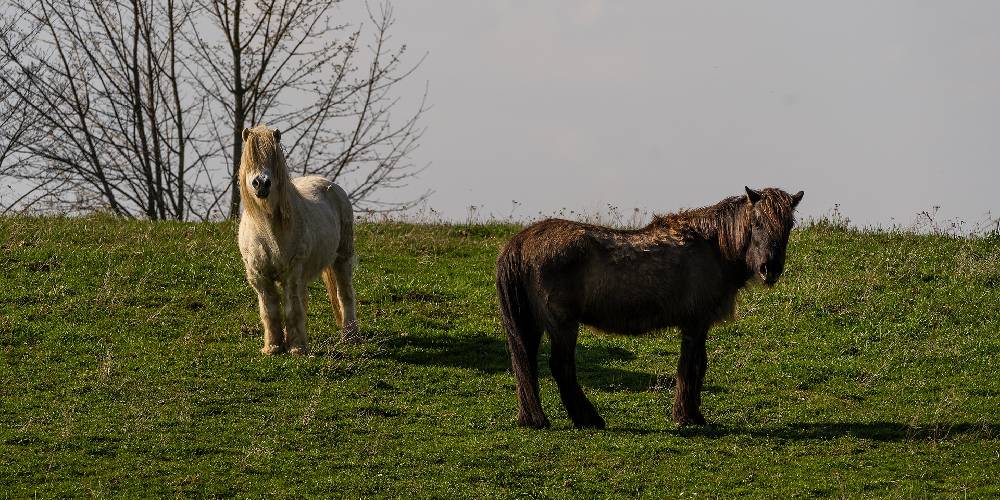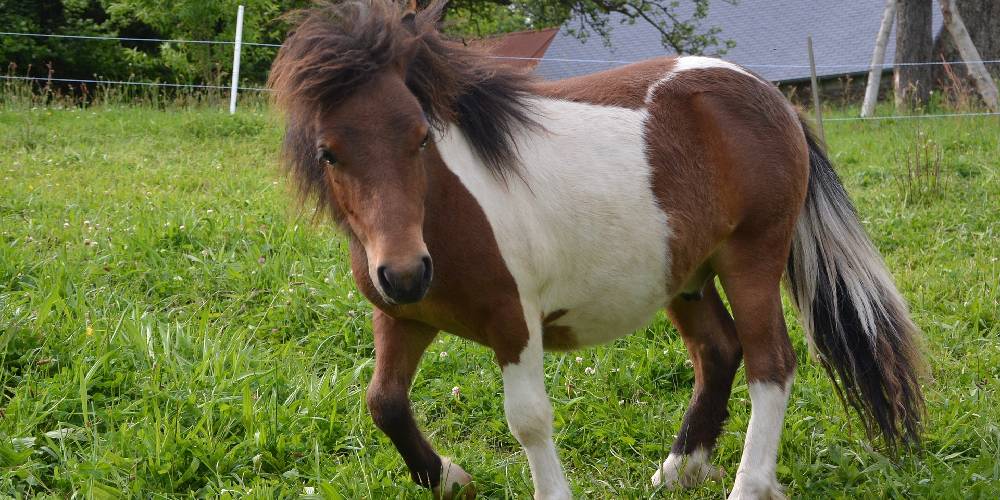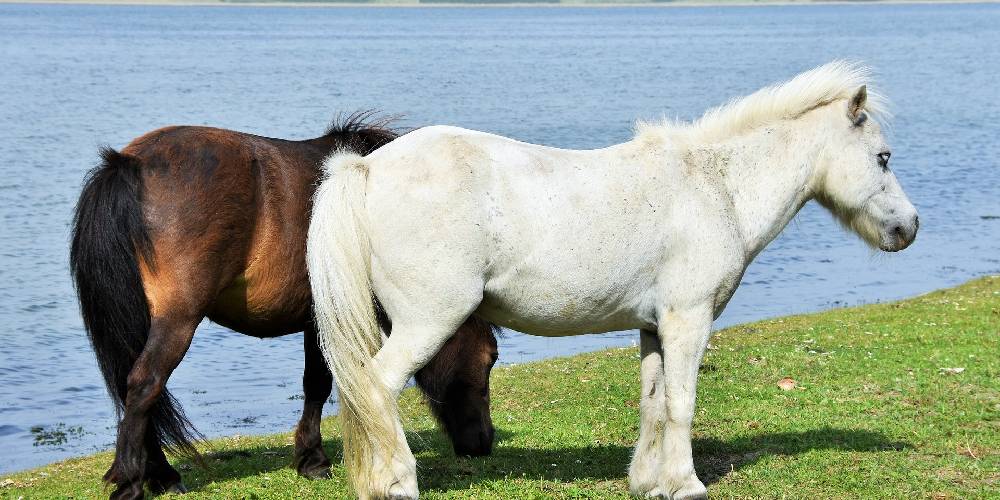The Shetland pony is quite possibly the most well known pony breed in the world. Known for its small size and use as a children’s riding pony, the Shetland pony is seen being used all around the globe for a variety of purposes. But where are these ponies originally from? What colors can they come in? And how big are these ponies anyway?
What Is The Shetland Pony?
The Shetland Pony is one of the most well known pony breeds in the world. This breed of pony originated in Scotland and is primarily used as a riding pony for small children and is sometimes used for driving as well. They are a very social breed that can come in nearly all colors and patterns. This pony is a warm blooded breed primarily used in English riding, though some Shetland ponies are used in children’s western rodeo events.
How Big Is The Shetland Pony?

Shetland ponies are very small ponies that can only stand up to 10.2 hands high. These ponies are actually so small that they typically aren’t even measured in hands, they are measured in inches. This being said, Shetland ponies actually stand at around 42 inches tall.
Because of their stocky build, Shetland ponies weigh about 400 to 450 pounds. This is a lot despite their small size. Shorter Shetland ponies may weigh less, but this is the average weight for this breed.
What Colors Can Shetland Ponies Be?
Shetland ponies can be a great variety of colors and patterns. The colors and patterns that Shetland ponies can be are:
- Bay
- Gray
- Chestnut
- Black
- Skewbald
- Piebald
- Overo
- Tovero
- Tobiano
- Palomino
The most common colors seen in this breed are: Black, chestnut, gray, and pinto, but the other colors mentioned above are fairly common as well.
A purebred Shetland pony should not be spotted.
The History Of The Shetland Pony

The Shetland pony is an ancient native pony breed to the Shetland Islands of Scotland. Like many other breeds, the exact origins of the breed are unknown other than that it was this island that they originated from.
It is thought that the ponies were living in Scotland around 8000 BC and crossed to the Shetland Islands before the water levels rose creating the islands.
Celts brought ponies of their own to the region in the 200s and 300s AD. It is believed that these Celtic ponies bred with and influenced the Shetland breed further improving and developing it.
Shetland ponies are one of the strongest ponies or horses in the world despite their size. Because of their great strength, they were very popularly used in mines as pit ponies and pulled coal carts up and down mine shafts.
Because the modern Shetland pony has ancestors who lived in rough conditions, hardiness and strength are in their genetics. The time spent in the mines brought a natural bravery and strength to the breed and the ponies who lived in the wild on the Shetland islands learned to survive bringing hardiness to the breed.
How To Identify The Shetland Pony
The Shetland pony is relatively easy to identify as it has a number of noticeable traits. This breed can be identified by its:
Mane & Tail
This breed has a very thick mane and tail as compared to other breeds. This is one of the main traits that it carries. The mane may often appear wild and unruly and it can be very difficult to manage and care for if it isn’t kept up on.
Head
The Shetland pony has a relatively small head in relation to the size of its body. The pony’s head is often wide with a broad forehead, and a wide and shortened muzzle. The pony’s head is small with larger features.
Eyes
The Shetland pony has large wide spaced eyes that are alert and intelligent.
Ears
In relation to its size, the Shetland has really small pricked ears that are sometimes hard to see if the mane is long and thick enough.
Back
This breed has a short strong little back that can carry a very heavy load. This is why the ponies are sometimes used as pack or driving animals,
Barrel
The pony’s barrel is noticeably round with good curvature to the ribs allowing maximum lung expansion. This breed is known to have an obesity issue making the barrel appear even more round.
Legs
This breed has short strong legs that are hard and sturdy. There are rarely lame or unsound and the sturdiness and soundness of their feet and legs is partially what gives them their long lifespan.
Winter Coats
This pony has a naturally thick coat already so when their winter coats come in, they are really thick and hairy. This pony can sometimes be identified by this trait in winter.
What The Shetland Pony Excels In

General Riding
Shetlands are most commonly used as general riding ponies for small children. This is because they are the perfect size for a child to ride. They can be used for riding both English and Western riding. but English is more popular with this breed.
Barrel Racing
Sometimes, these ponies can be used to run barrels with small children in child rodeo competitions. Though this isn’t super common, these ponies do great in these competitions if trained properly.
Jumping
Though they are a small breed, Shetland ponies make great youth jumping horses. There are even small showjumping competitions for children to compete in while riding a Shetland pony.
Racing
There are Shetland pony races held annually in a number of countries. These ponies are ridden by young children who run a certain number of laps around an arena set up with small hedges as a mock-steeplechase track. Some of these races are held on real racetracks though this is less common to see than in an arena.
Riding Lessons
Children’s riding lessons are often used on Shetland ponies, especially for more advanced students. Because these ponies are of the right size for a child and can jump, they are popularly used for children’s jumping lessons.
How Long Do Shetland Ponies Live?
Because they are naturally hardy and healthy little ponies, Shetlands are long living ponies. The longest living Shetland pony was actually a Shetland pony cross who actually lived to be 56 years old!
The average age for these ponies is around 30 years of age.
Fun Facts On Shetland Ponies
- They are so small that they are measured in inches rather than hands!
- One of the oldest ponies ever to live was a Shetland cross
- Make sure not to spoil your Shetland pony or else it will become temperamental!

